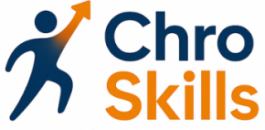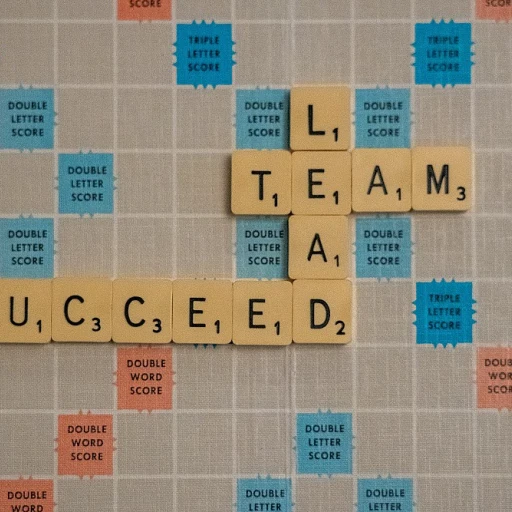
Understanding the Role of a Chief Human Resources Officer
Defining the Strategic Landscape
To understand the role of a Chief Human Resources Officer (CHRO), it's essential to recognize that this position sits at the intersection of strategic management and employee-centered leadership. As pivotal members of executive teams, CHROs play crucial roles in shaping organizational culture, aligning HR strategies with business objectives, and ensuring the effective development of human capital.
In today's dynamic business environment, the responsibilities of a CHRO extend far beyond traditional HR functions. They are accountable for driving strategic initiatives, fostering a culture of continuous learning and innovation, and implementing effective training methods that enhance skills across the organization. Their job requires adeptness in various training methods, including instructor-led, online, and blended learning, to meet the diverse needs of a modern workforce.
Successful CHROs often employ a wide array of training methods to hone the skills of their teams and themselves. By making use of innovative tools such as simulation training and role-playing, they can mimic real work scenarios for learners, allowing them to gain practical knowledge in a controlled environment. Moreover, eLearning platforms enable CHROs to deliver content effectively and efficiently, ensuring that time management is optimized without compromising the quality of learning.
For CHROs, fostering an environment of continuous employee training development is crucial. This ensures that employees are equipped with the necessary problem-solving skills required for real-time challenges. Yet, mastering the balance between strategic oversight and detailed attention to individual employee growth is one of the core challenges faced in this top-tier HR role.
Further insights into the essential skills for Chief Human Resources Officers can be found in our detailed guide on mastering the art of coaching out essential skills.
Key Skills Required for CHROs
Essential Capabilities for a Dynamic HR Leader
The role of a Chief Human Resources Officer (CHRO) requires a diverse set of skills to navigate the complexities of managing human capital effectively. Key skills in this realm serve as the backbone of successful human resource management, equipping CHROs to lead their teams and organizations toward strategic goals.
Firstly, strategic thinking is crucial for CHROs. This skill allows them to align HR initiatives with overall business objectives, ensuring that the workforce is prepared to meet the company's long-term goals. Effective problem-solving abilities are also essential, as HR leaders often deal with nuanced employee issues and conflicts that require thoughtful resolution strategies.
Communication stands as another cornerstone skill. CHROs must be adept at conveying complex information clearly and effectively to employees at all levels. This ability to communicate fosters a healthy organizational culture and enhances team learning and collaboration.
Leadership skills cannot be overstated. As CHROs are at the helm of HR teams, they must inspire and motivate their teams while making critical decisions that impact the workforce. This includes managing change effectively and fostering an environment where diversity and inclusion are priorities.
In today's digital age, technological proficiency is increasingly important. CHROs need to leverage HR technology and data analytics to make informed decisions. Online and eLearning based training methods aid in continuously up-skilling and re-skilling employees, making tech savvy a non-negotiable skill.
A CHRO with well-developed negotiation skills can effectively manage employee relations and collective bargaining situations. These skills are vital for reaching agreements that are both beneficial for the employees and strategic for the organization.
Time management and adaptability are equally important, allowing CHROs to juggle various tasks and adapt to rapid changes within the HR landscape. Staying ahead of future trends and evolving demands requires a keen ability to learn and adapt continuously.
For those interested in delving deeper into these competencies, a resourceful article that further breaks down essential skills for Chief Human Resources Officers can provide comprehensive insights.
Innovative Training Methods for Skill Enhancement
Enhancing CHRO Skills Through Innovative Training Approaches
The landscape of training methods has evolved significantly, offering a wealth of opportunities for chief human resources officers (CHROs) to enhance their skills effectively. As the demands of the role evolve, so do the strategies for skill acquisition and enhancement. One of the most popular methods currently is the blend of traditional and modern techniques, commonly referred to as blended learning. This approach combines instructor-led sessions with online modules, providing CHROs the opportunity to learn at their own pace. By integrating eLearning into the curriculum, training programs become more flexible and accessible, catering to diverse learning preferences. In addition to blended learning, simulation training offers CHROs a chance to tackle real-world problems in a controlled environment. This method not only enhances problem-solving skills but also prepares them for unforeseen challenges in their work environments. Similarly, role playing and job shadowing present opportunities for CHROs to learn from experienced professionals, offering hands-on experience that is crucial for job performance. The advent of technology has also paved the way for real-time feedback systems, which facilitate immediate performance assessments and adjustments. Such systems are integral in maintaining a continuous learning and development process. For instance, platforms offering innovative training programs designed specifically for CHROs can be instrumental in refining both leadership and technical skills. Case studies have shown that when CHROs engage in instructor-led training, their understanding of complex concepts is significantly enhanced, thanks to the dynamic exchange of ideas and experiences. This traditional method remains relevant, especially when supplemented with modern tools and resources. In conclusion, the application of diverse training methods is vital in developing a well-rounded CHRO. By fostering a culture of continuous learning and embracing technological advancements, organizations can ensure their HR leaders are equipped with the necessary competencies to navigate the evolving corporate landscape.The Role of Technology in CHRO Training
Integrating Technology for Enhanced Learning
In today's fast-paced world, technology plays a pivotal role in enhancing the training methods for Chief Human Resources Officers (CHROs). The integration of technology in training programs not only makes learning more accessible but also more effective. With the advent of eLearning platforms, CHROs can now access a wealth of knowledge and training resources online, allowing them to learn at their own pace and convenience.
ELearning and Online Platforms
eLearning platforms offer a variety of training methods that cater to different learning styles. From video tutorials to interactive modules, these platforms provide a comprehensive learning experience. Online platforms also allow for real-time updates and the inclusion of the latest industry trends, ensuring that CHROs are always equipped with up-to-date knowledge.
Simulation and Role-Playing
Simulation training and role-playing are effective methods that leverage technology to provide real-world scenarios for CHROs. These methods allow learners to practice problem-solving and decision-making in a controlled environment, enhancing their skills without the risk of real-world consequences. This type of training is particularly beneficial for developing leadership and team management skills.
Blended Learning Approaches
Blended learning combines traditional instructor-led training with online learning, offering a balanced approach that maximizes the benefits of both methods. This approach allows CHROs to engage in face-to-face interactions while also taking advantage of the flexibility and accessibility of online resources. Blended learning is an effective training method that accommodates different learning preferences and schedules.
Real-Time Feedback and Analytics
Technology also enables the collection of real-time feedback and analytics, which are crucial for measuring the effectiveness of training programs. By analyzing data on learner engagement and performance, organizations can tailor their training methods to better meet the needs of their employees. This data-driven approach ensures that training development is aligned with the organization's goals and the CHRO's job requirements.
Measuring the Impact of Training on CHRO Performance
Evaluating the Effectiveness of Training Programs
Measuring the impact of training on the performance of Chief Human Resources Officers (CHROs) is crucial to ensure that the investment in training methods is yielding tangible results. Effective training programs should enhance the skills and knowledge of CHROs, enabling them to lead their teams more efficiently and contribute to the overall success of the organization.
Key Performance Indicators (KPIs) for Training Impact
To assess the effectiveness of training, organizations can establish specific Key Performance Indicators (KPIs) that align with the objectives of the training program. These KPIs may include:
- Improvement in employee engagement and satisfaction levels.
- Reduction in employee turnover rates.
- Enhanced problem-solving capabilities and decision-making skills.
- Increased efficiency in managing HR processes and systems.
- Better alignment of HR strategies with organizational goals.
Feedback and Continuous Improvement
Regular feedback from CHROs and their teams can provide valuable insights into the effectiveness of the training methods employed. This feedback can be gathered through surveys, interviews, and performance reviews. By analyzing this data, organizations can identify areas for improvement and adjust their training programs accordingly, ensuring they remain relevant and impactful.
Utilizing Technology for Real-Time Assessment
Incorporating technology into the training development process allows for real-time assessment of training outcomes. Tools such as eLearning platforms, simulation training, and online assessments can provide immediate feedback to both learners and instructors. This real-time data can be used to make informed decisions about the effectiveness of the training methods and to make necessary adjustments in a timely manner.
Case Studies and Role Playing
Implementing case studies and role-playing exercises as part of the training program can offer CHROs practical, real-world scenarios to apply their learning. These methods not only help in reinforcing the knowledge gained but also in evaluating how effectively CHROs can apply their skills in different situations. Observing their performance in these exercises can provide a clear indication of the training's impact on their job performance.
Long-Term Impact and Continuous Learning
Finally, the long-term impact of training on CHRO performance should be monitored over time. Continuous learning opportunities, such as blended learning and instructor-led training sessions, can help maintain and further develop the skills acquired during initial training. By fostering a culture of continuous learning, organizations can ensure that their CHROs remain at the forefront of HR leadership.













